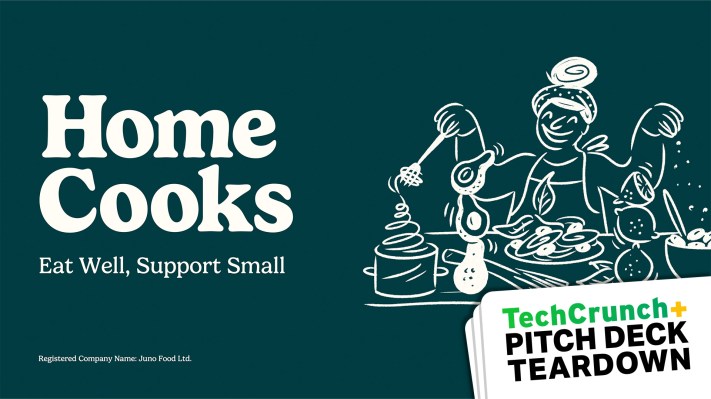Originally a Facebook group started during the COVID-19 lockdowns in 2020 that people used to cook healthy meals for others nearby, HomeCooks has now evolved into a comprehensive marketplace for chefs. It facilitates the entire process for its chefs, from cooking to delivery, and offers over 200 meal options. The company recently raised $3.2 million in crowdfunding on Seedrs.
Positioning itself as the “Etsy of food,” HomeCooks has grown rapidly and today serves around 7,000 customers. Let’s look at how it told its story for its crowdfunding campaign.
Quick spoiler alert here: At 25 slides, this deck is way too long, but it’s also one of the best pitch decks I’ve seen in a hot minute.
We’re looking for more unique pitch decks to tear down, so if you want to submit your own, here’s how you can do that.
Slides in this deck
The company shared its 25-slide deck in full, without redactions or edits. Here’s how that shakes out:
- Cover slide
- Mission slide
- “The Etsy of Food” slide
- How it works for eaters slide
- How it works for food creators slide
- Revenue and traction metrics slide
- Problem interstitial slide
- Problem for eaters slide
- Problem for food creators slide
- Solution for food creators slide
- Market size slide
- Competition slide
- Competitive advantage slide
- Food waste slide
- Business model for food creators slide
- Food creators growth slide
- Business model slide
- Product slide
- User acquisition slide
- Team slide
- Plan/use of funds slide
- Revenue growth and expansion plan slide
- Closing interstitial slide
- Social impact slide
- Closing slide
Three things to love
This isn’t a perfect pitch deck, but I’ll be damned if it isn’t an incredibly good one. Here are some of the highlights:
Threading the marketplace needle
There are so many reasons why marketplaces are gruelingly hard to pull off. First and foremost, marketplaces require a large number of buyers and sellers to be successful. However, attracting sellers without a substantial buyer base, and vice versa, is a significant challenge best described as a “chicken-and-egg” problem. Also, managing the balance between supply and demand can be tricky: Too much supply can lead to low prices and dissatisfied sellers, while too little can frustrate buyers. This balance must be constantly monitored and managed.
In this deck, HomeCooks shows that it has figured out how to make this work.
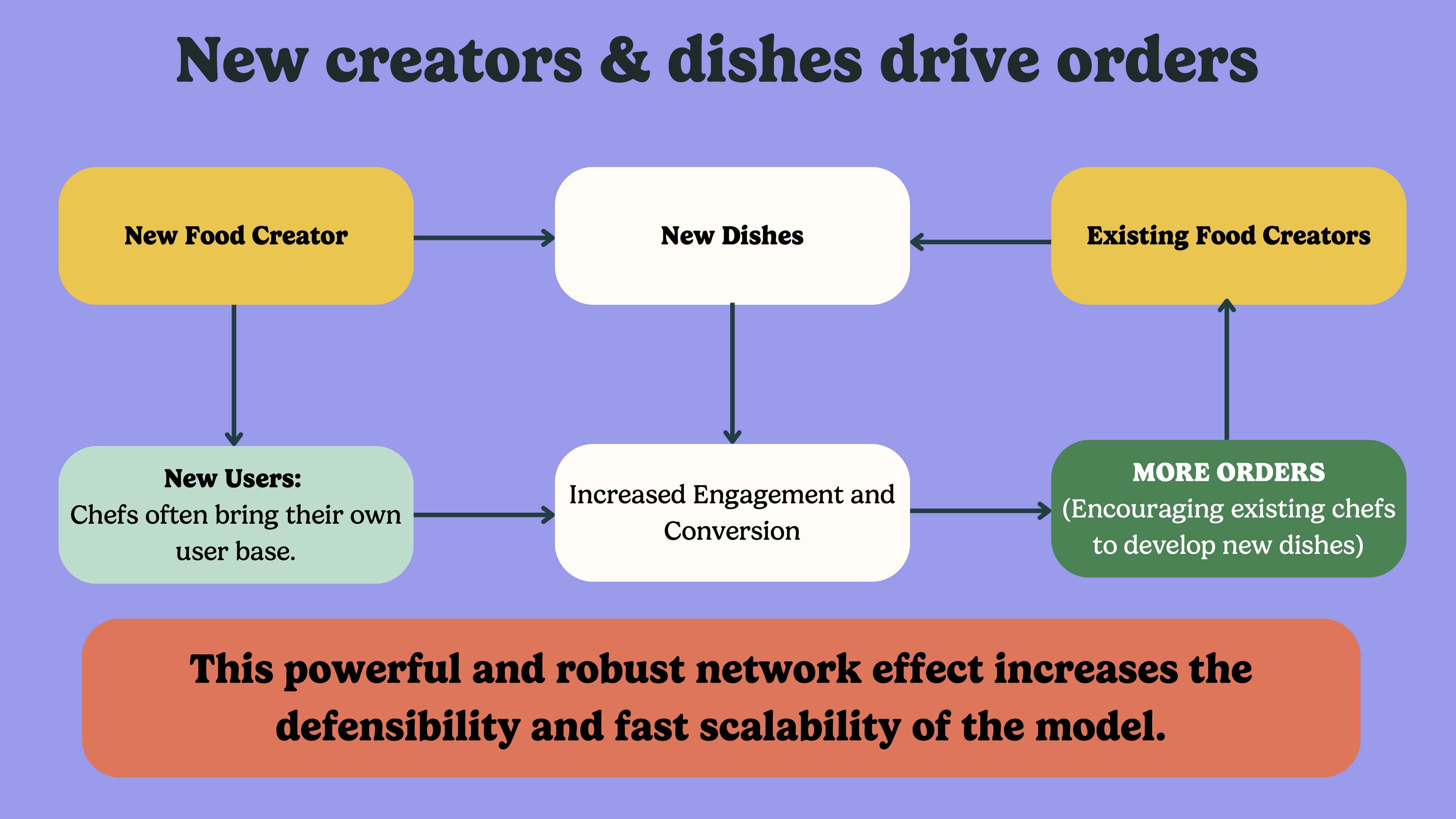
[Slide 17] HomeCooks argues that the audience scales with supply. Normally, I’d call BS, but the numbers back up their claims. Image Credits: HomeCooks
A sustainability angle
Okay, so…

[Slide 14] Yassss! Image Credits: HomeCooks
I’m not 100% sure I actually believe these claims — amateur cooks are often pretty wasteful, and 5% doesn’t actually sound like it’s that much waste. That aside, I loved how the company effortlessly weaves a sustainability story into its fundraising narrative.
A hell of a team
Buried all the way back at slide 20, the company pulls a surprise out of the hat:

[Slide 20] Well . . . Damn! That’s impressive! Image credit: HomeCooks
Bravo.
In the rest of this teardown, we’ll take a look at three things HomeCooks could have improved or done differently, along with its full pitch deck!
Three things that could be improved
Overall, there’s really only one significant flaw with the HomeCooks deck, so let’s start there.
What’s with the use of funds?
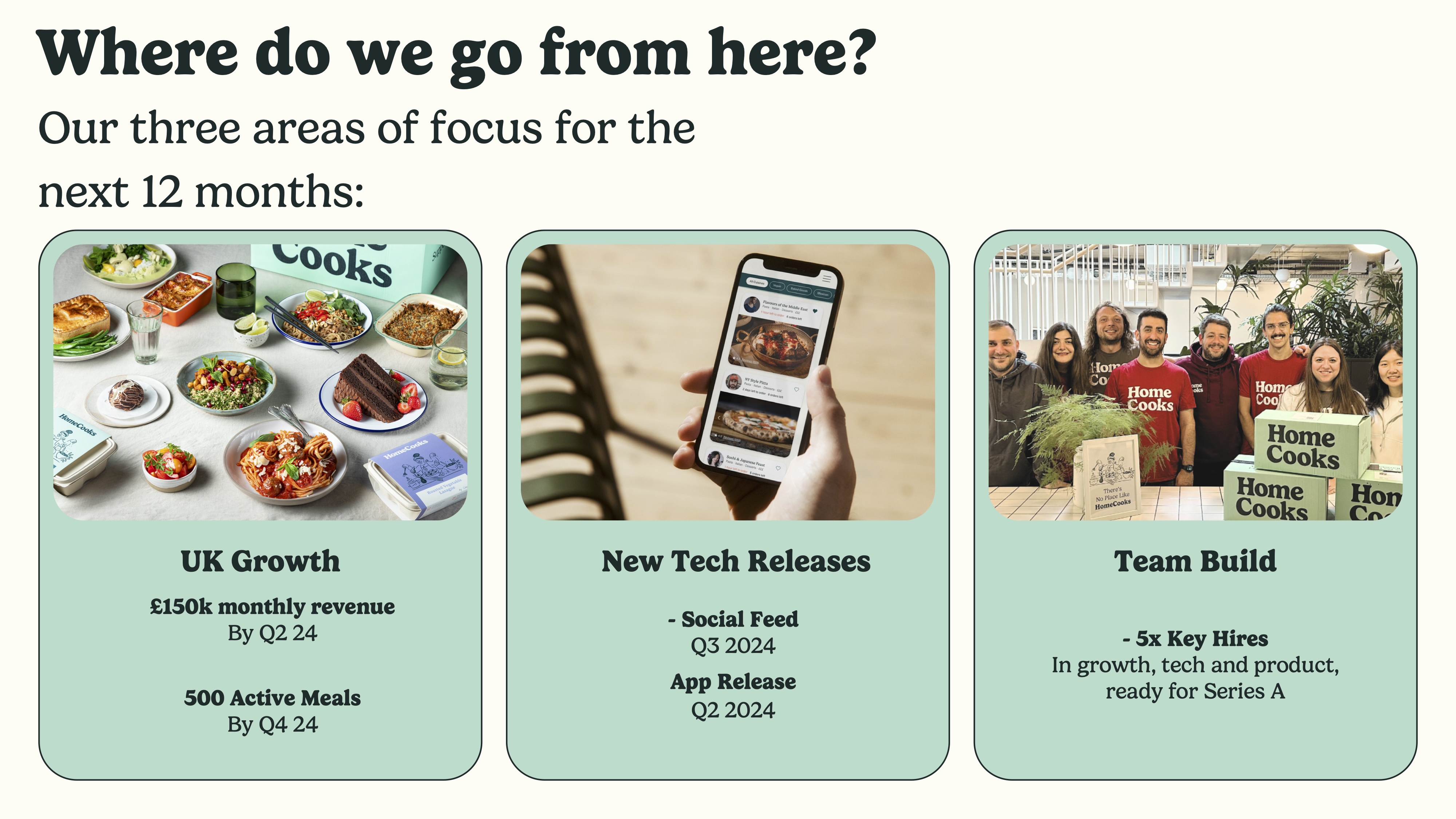
[Slide 21] So close. Image credit: HomeCooks
This slide has a few pieces of the puzzle, but for a perfect score, it would have to be more specific and use SMART goals to really explain the targets this company is aiming for. “Social feed” and “App release” are too fuzzy, and no investor gives a crap about “5x key hires.”
The company even says it wants to get “ready for Series A,” but this slide is describing a company that expects to have sometime next year:
- $190,000 in monthly revenue that isn’t necessarily recurring.
- 500 meals in the catalog by Q4 2024.
- A social feed and an app release.
- 5x key hires.
Those metrics are pretty mediocre, overall. Yes, the monthly revenue is impressive, but consumers are fickle. How many active meals a company has is pretty irrelevant to its success with raising a Series A.
The company should ideally have set a series of measurable milestones that would paint a picture of a company that would have no problem raising a growth round. This slide isn’t all bad, but it doesn’t quite cut it either.
Startups: Your fundraising outcomes set the stage for your next round, so treat them as such.
A complicated marketplace narrative
It’s impressive that the company could show that it has been able to make a marketplace-based business model work, but there’s a flip side to this, too. HomeCooks has to tell two stories at once: That of the supply side and that of the demand side.
Invariably, that complicates the narrative, as you now have to explain two sets of problems, solutions and products. There’s no real way around that — or is there? Stay tuned for an upcoming article where I show how you can thread that needle — and it becomes really hard to tell a clean story.
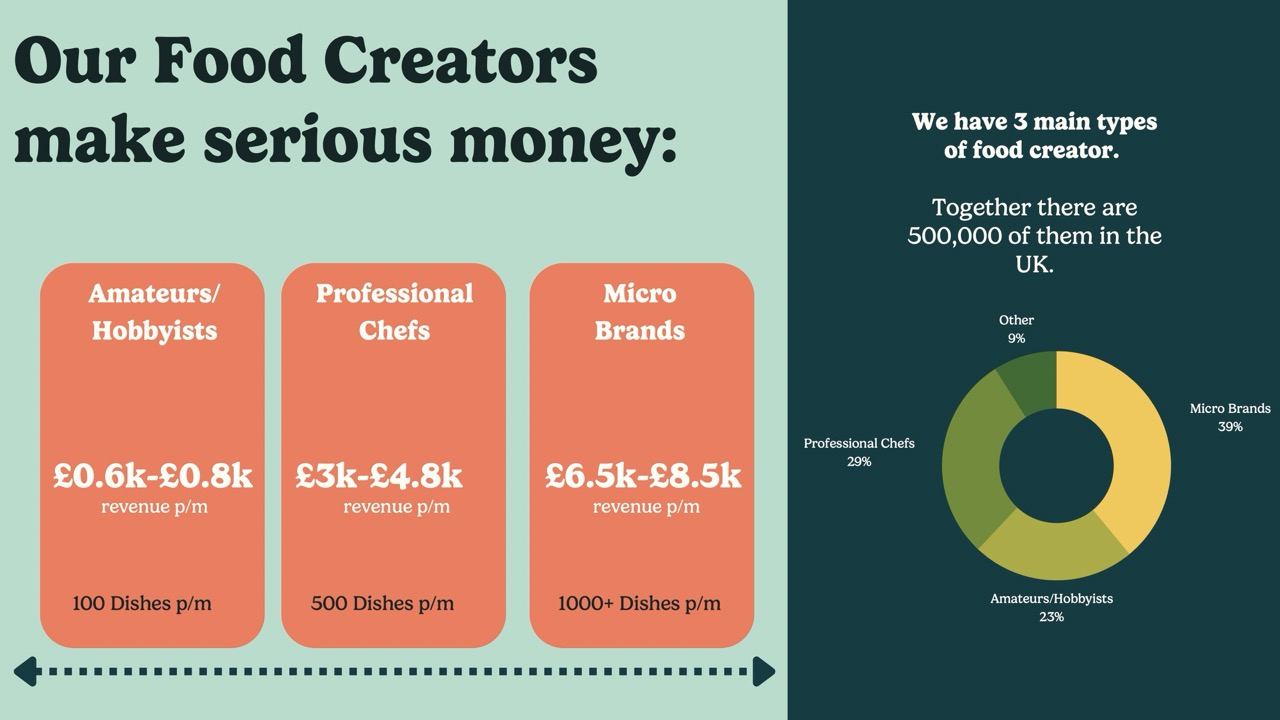
[Slide 15] I’m not sure investors will care . . . Image Credits: HomeCooks
In Slide 15, you can see where the narrative stalls. Yes, it’s important for the food creators to make money (otherwise they’d churn off the platform), but I wouldn’t call £0.6K to £0.8K (that’s $700 to $1,000 per month) “serious money.”
A cleaner story makes the narrative easier to understand.
The big caveat here, of course, is that this is a crowdfunding campaign, which means that every customer and cook on the platform could potentially see these slides, and you can’t be as candid as you might be in a closed room with an investor. You have to be kinder and more sensitive, so I’m willing to give HomeCooks some grace on this one.
“We are growing fast” . . . Are you?!
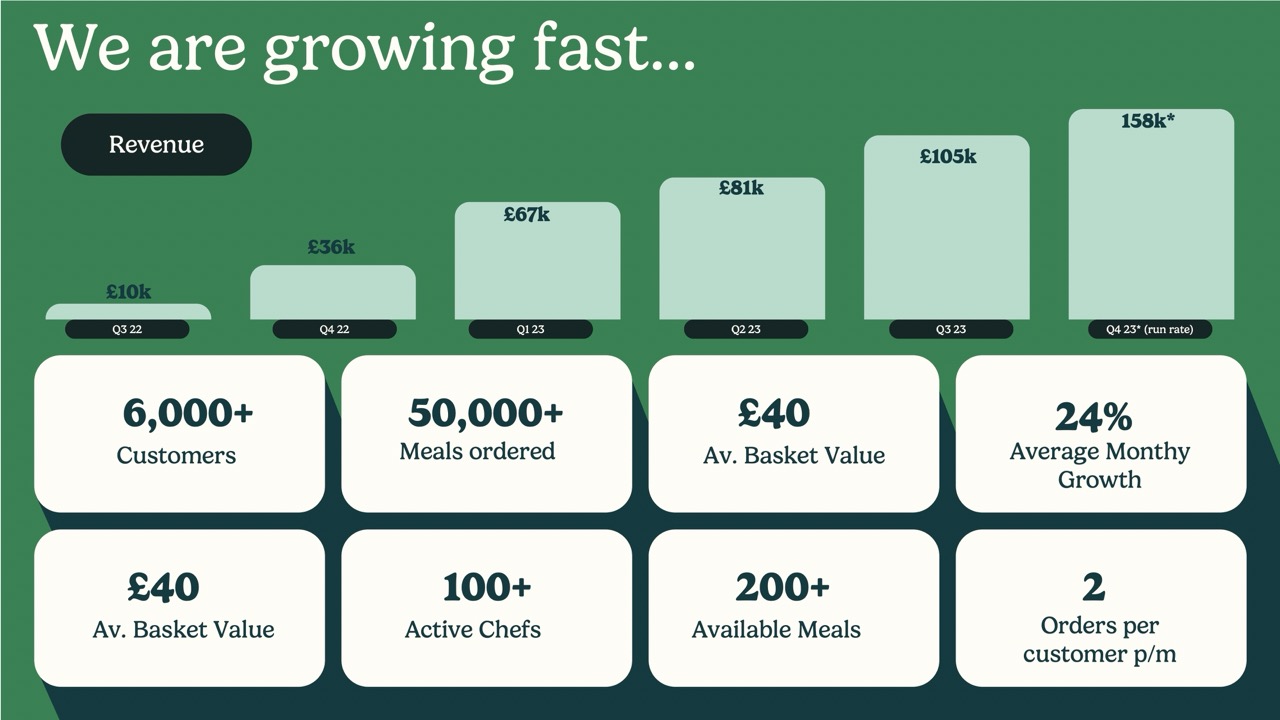
[Slide 6] Growing, yes. Fast? Wellllll . . . Image Credits: HomeCooks
But, actually, the company is doing itself a disservice by screwing up the chart here. The £158K bar at the top right should be about 50% taller than the £105K bar. Here’s what it should look like:
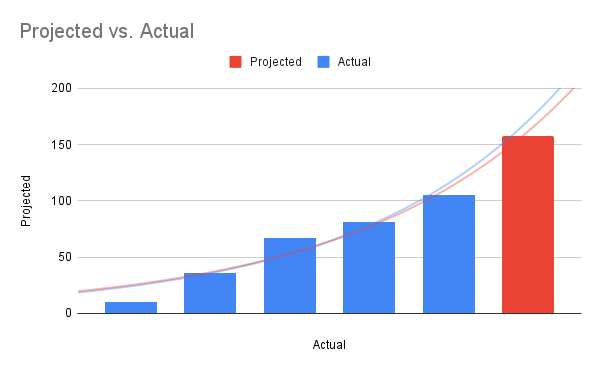
When you get your bar heights right, it looks a lot better. Image Credits: Haje Kamps / TechCrunch
I also added trend lines for the actual revenue and the projected amount — that’s definitely an exponential growth curve.
As a startup, ensure your graphics make sense. It is not a good idea to overstate your progress, but understating it is the kind of false modesty that won’t do you any favors!
The full pitch deck
If you want your own pitch deck teardown featured on TC+, here’s more information. Also, check out all our Pitch Deck Teardowns and other pitching advice, all collected in one handy place for you!
